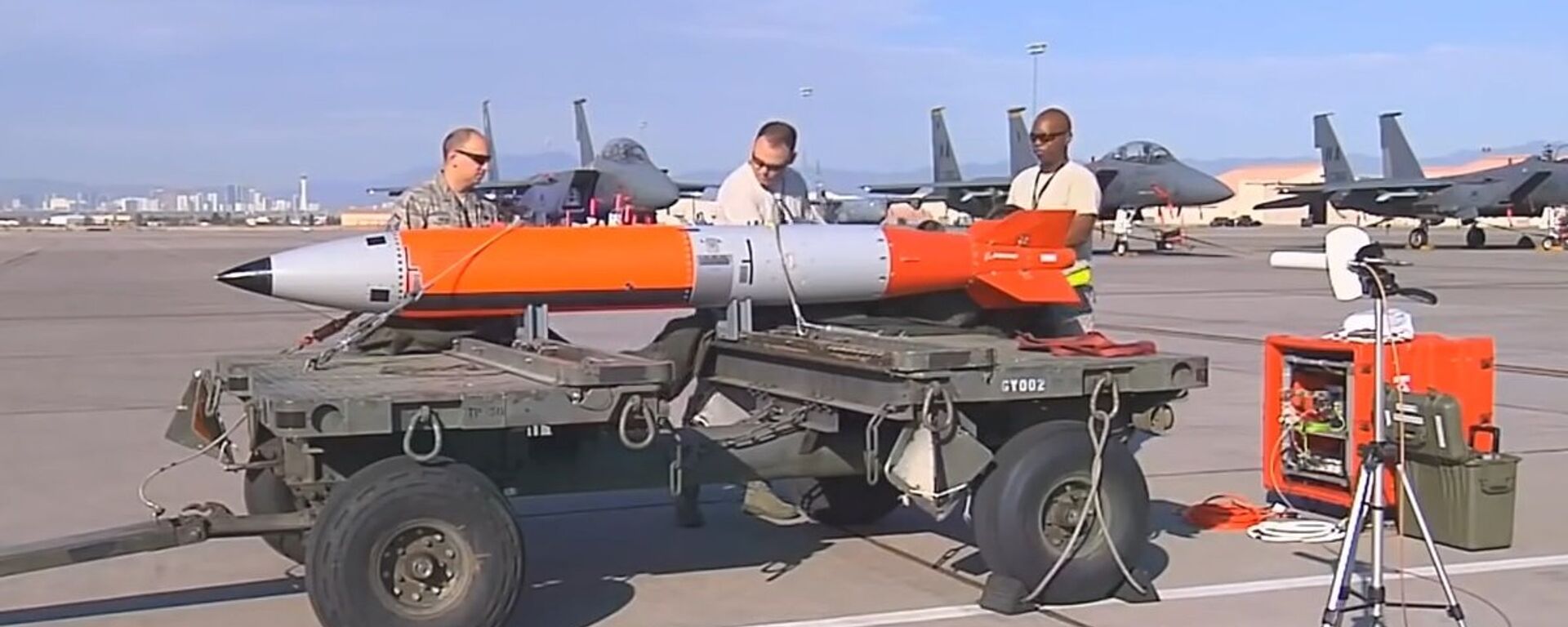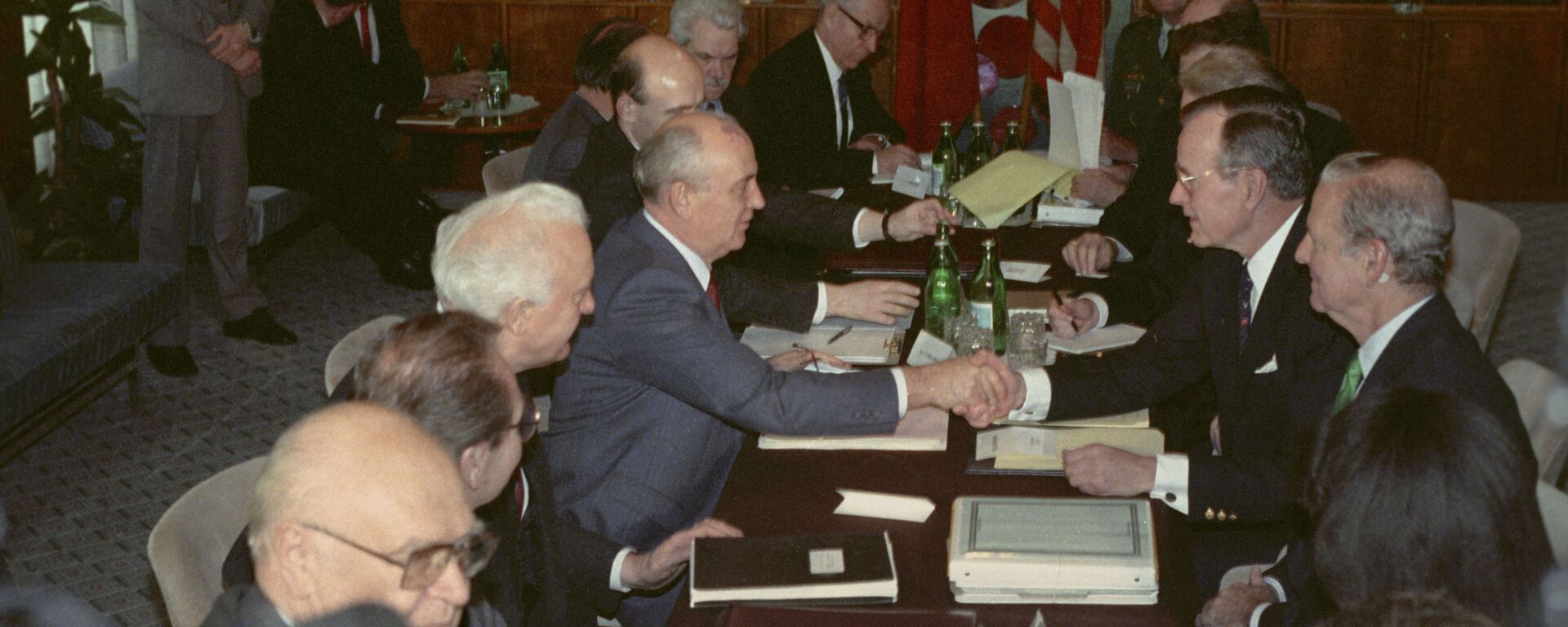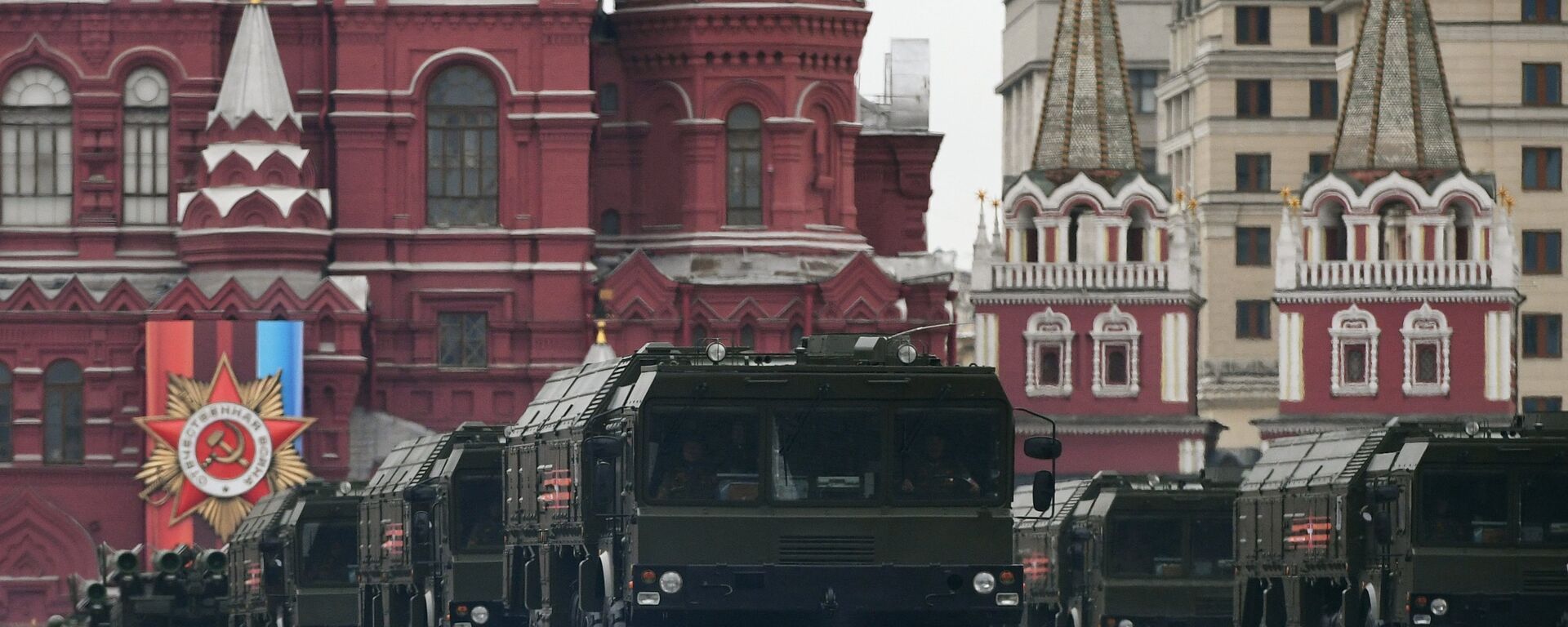https://sputnikglobe.com/20250118/new-us-nuke-deployment-in-europe-raises-serious-questions-about-natos-true-nature-1121458693.html
New US Nuke Deployment in Europe Raises Serious Questions About NATO's True Nature
New US Nuke Deployment in Europe Raises Serious Questions About NATO's True Nature
Sputnik International
The United States has begun the forward deployment of a new generation of its B61 nuclear gravity bomb at bases in Europe, a senior administrator has announced. What signal does the deployment send to Moscow? What impact will it have on strategic security in Europe? Sputnik turned to a senior former Pentagon insider for answers.
2025-01-18T19:00+0000
2025-01-18T19:00+0000
2025-01-18T19:04+0000
analysis
military & intelligence
michael maloof
donald trump
united kingdom (uk)
nato
pentagon
b61
inf treaty
turkiye
https://cdn1.img.sputnikglobe.com/img/07e8/05/1c/1118657708_0:156:2860:1765_1920x0_80_0_0_372b016753c2701418b0a6b70091f47a.jpg
"The new B61-12 gravity bombs are fully forward deployed, and we have increased NATO's visibility to our nuclear capabilities through visits to our enterprise and other regular engagements," US National Nuclear Security Administration chief Jill Hruby revealed in a talk at the Hudson Institute this week.Reports have been swirling in recent years about US plans to redeploy tactical nuclear weapons in the UK at the RAF base at Lakenheath, although an official announcements have been made to date.Testing of the B61-12 was completed in 2020, with production starting in late 2021, and the Bulletin of the Atomic Scientists expecting 400-500 of the weapons to be produced, in part for deployments abroad.Older variants of the munition are currently deployed in Belgium, Germany, Italy, the Netherlands, and Turkiye's Incirlick Air Base. NATO has approved the weapons to be used in battle by select alliance members as part of the bloc's "nuclear sharing" arrangements.The announcement of the bombs' deployment in Europe is meant to “signal to Moscow that NATO and particularly the UK…are prepared for any ‘attack’ on any NATO country,” says ex-DoD analyst Michael Maloof.What it really signals is just how much of a US protectorate Western European countries and the UK have allowed themselves to become, Maloof, a former senior security policy analyst with the Office of the US Secretary of Defense, said.The nukes’ deployment once again “underscores how NATO has evolved not into a defensive alliance, but an offensive alliance,” with the bases where the bombs are stored obvious targets for Russia in the event of a deadly escalation, Maloof said.Can Trump Fix a Broken Alliance?Maloof hopes that under Trump 2.0, “a total reevaluation of the deployment of US bases throughout NATO” will take place, especially in Germany but possibly also the UK.NATO’s continued existence, the alliance's "Cold War 2.0" against Russia and the bloc's eastward expansion have been a disaster for European security, the observer said.The nuke deployment, the termination of the INF Treaty during Trump’s first term and other factors have “made Europe an all the more dangerous place to be,” Maloof emphasized, with reaction time in case of a nuclear escalation being "virtually nil."
https://sputnikglobe.com/20241014/steadfast-noon-risking-noon-twilight-what-are-the-risks-of-natos-nuclear-sharing-drills-1120545520.html
https://sputnikglobe.com/20240719/russian-missiles-off-alaska-how-moscow-can-respond-to-us-short-sighted-euromissile-plans-1119434040.html
https://sputnikglobe.com/20241202/the-day-the-cold-war-ended-or-so-russia-thought-1121064328.html
united kingdom (uk)
turkiye
Sputnik International
feedback@sputniknews.com
+74956456601
MIA „Rossiya Segodnya“
2025
News
en_EN
Sputnik International
feedback@sputniknews.com
+74956456601
MIA „Rossiya Segodnya“
Sputnik International
feedback@sputniknews.com
+74956456601
MIA „Rossiya Segodnya“
is us bringing nukes back to britain, where in europe does us have nukes, what is b61 bomb
is us bringing nukes back to britain, where in europe does us have nukes, what is b61 bomb
New US Nuke Deployment in Europe Raises Serious Questions About NATO's True Nature
19:00 GMT 18.01.2025 (Updated: 19:04 GMT 18.01.2025) The United States has begun the forward deployment of a new generation of its B61 nuclear gravity bomb at bases in Europe, a senior administrator has announced. What signal does the deployment send to Moscow? What impact will it have on strategic security in Europe? Sputnik turned to a senior former Pentagon insider for answers.
"The new B61-12 gravity bombs are fully forward deployed, and we have increased NATO's visibility to our nuclear capabilities through visits to our enterprise and other regular engagements," US National Nuclear Security Administration chief Jill Hruby
revealed in a talk at the
Hudson Institute this week.
"Our strategic partnership with the UK is very strong, as is their commitment to their nuclear deterrent. And we have advanced our thinking together about critical supply chain resilience. NATO is strong," Hruby added, hinting at the prospects for 'enhanced' nuclear cooperation.
Reports have been swirling in recent years about US plans to
redeploy tactical nuclear weapons in the UK at the RAF
base at Lakenheath, although an official announcements have been made to date.
The B61-12, also known as the B61 Mod 12, is the latest upgrade to the US variable yield nuclear gravity bomb design first rolled out in the late 1960s. The Mod 12 is set to replace the older Mod 3, 4 and 7 variants of the weapon, and features a 0.3-50 kt yield.
Testing of the B61-12 was completed in 2020, with production starting in late 2021, and the Bulletin of the Atomic Scientists expecting 400-500 of the weapons to be produced, in part for
deployments abroad.
Older variants of the munition are currently deployed in Belgium, Germany, Italy, the Netherlands, and Turkiye's Incirlick Air Base. NATO has approved the weapons to be used in battle by select alliance members as part of the bloc's
"nuclear sharing" arrangements.

14 October 2024, 13:13 GMT
The announcement of the bombs' deployment in Europe is meant to “signal to Moscow that NATO and particularly the UK…are prepared for any ‘attack’ on any NATO country,” says ex-DoD analyst Michael Maloof.
What it really signals is just how much of a US protectorate Western European countries and the UK have allowed themselves to become, Maloof, a former senior security policy analyst with the Office of the US Secretary of Defense, said.
“When I used to live there on a military base, we used to joke how the UK was nothing but a floating aircraft carrier because of all the US bases on the RAF facilities there,” the observer, who grew up in southern England during the Cold War, recalled.
The nukes’ deployment once again “underscores how NATO has evolved not into a defensive alliance, but an offensive alliance,” with the bases where the bombs are stored obvious targets for Russia in the event of a deadly escalation, Maloof said.
Can Trump Fix a Broken Alliance?
Maloof hopes that under Trump 2.0, “a total reevaluation of the deployment of US bases throughout NATO” will take place, especially in Germany but possibly also the UK.
NATO’s continued existence, the alliance's "Cold War 2.0" against Russia and the bloc's eastward expansion have been a disaster for European security, the observer said.
“I think it’s the beginning of the end of NATO as we know it. This perennial cycle has just got to cease. And given how we don’t even have a defense against hypersonics…it really shows that we’re reaching a very dangerous pinnacle here of escalation.”
Michael Maloof
Former senior DoD policy analyst
The nuke deployment, the termination of the INF Treaty during Trump’s first term and other factors have “made Europe an all the more dangerous place to be,” Maloof emphasized, with reaction time in case of a nuclear escalation being "virtually nil."
"I think that this posturing that we continually see to 'show deterrence' is actually making the West even more vulnerable to attack because it is an agitating factor," the observer added.

2 December 2024, 09:52 GMT





